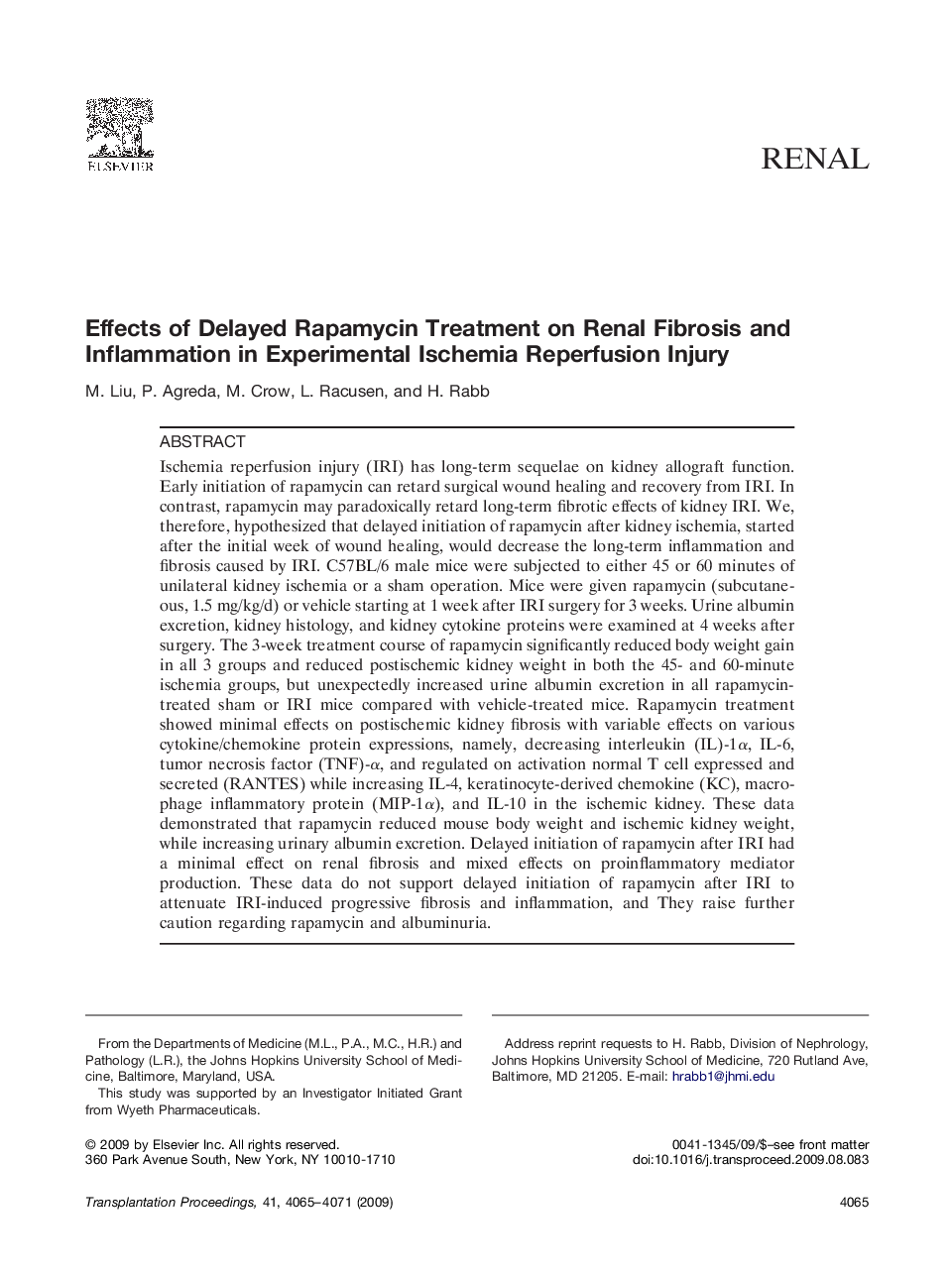| Article ID | Journal | Published Year | Pages | File Type |
|---|---|---|---|---|
| 4258462 | Transplantation Proceedings | 2009 | 7 Pages |
Ischemia reperfusion injury (IRI) has long-term sequelae on kidney allograft function. Early initiation of rapamycin can retard surgical wound healing and recovery from IRI. In contrast, rapamycin may paradoxically retard long-term fibrotic effects of kidney IRI. We, therefore, hypothesized that delayed initiation of rapamycin after kidney ischemia, started after the initial week of wound healing, would decrease the long-term inflammation and fibrosis caused by IRI. C57BL/6 male mice were subjected to either 45 or 60 minutes of unilateral kidney ischemia or a sham operation. Mice were given rapamycin (subcutaneous, 1.5 mg/kg/d) or vehicle starting at 1 week after IRI surgery for 3 weeks. Urine albumin excretion, kidney histology, and kidney cytokine proteins were examined at 4 weeks after surgery. The 3-week treatment course of rapamycin significantly reduced body weight gain in all 3 groups and reduced postischemic kidney weight in both the 45- and 60-minute ischemia groups, but unexpectedly increased urine albumin excretion in all rapamycin-treated sham or IRI mice compared with vehicle-treated mice. Rapamycin treatment showed minimal effects on postischemic kidney fibrosis with variable effects on various cytokine/chemokine protein expressions, namely, decreasing interleukin (IL)-1α, IL-6, tumor necrosis factor (TNF)-α, and regulated on activation normal T cell expressed and secreted (RANTES) while increasing IL-4, keratinocyte-derived chemokine (KC), macrophage inflammatory protein (MIP-1α), and IL-10 in the ischemic kidney. These data demonstrated that rapamycin reduced mouse body weight and ischemic kidney weight, while increasing urinary albumin excretion. Delayed initiation of rapamycin after IRI had a minimal effect on renal fibrosis and mixed effects on proinflammatory mediator production. These data do not support delayed initiation of rapamycin after IRI to attenuate IRI-induced progressive fibrosis and inflammation, and They raise further caution regarding rapamycin and albuminuria.
